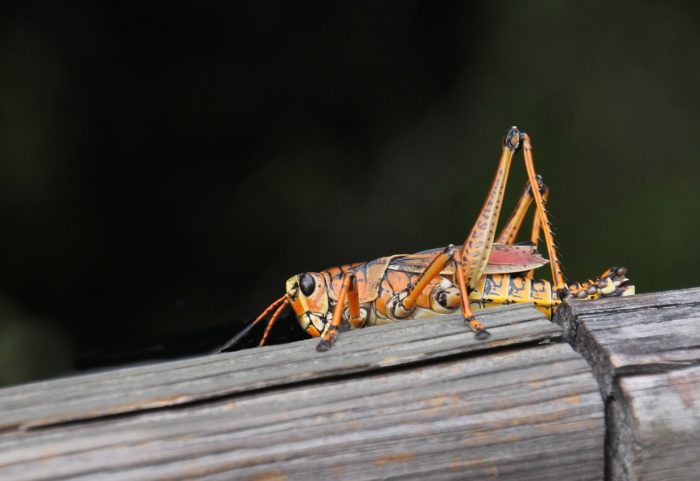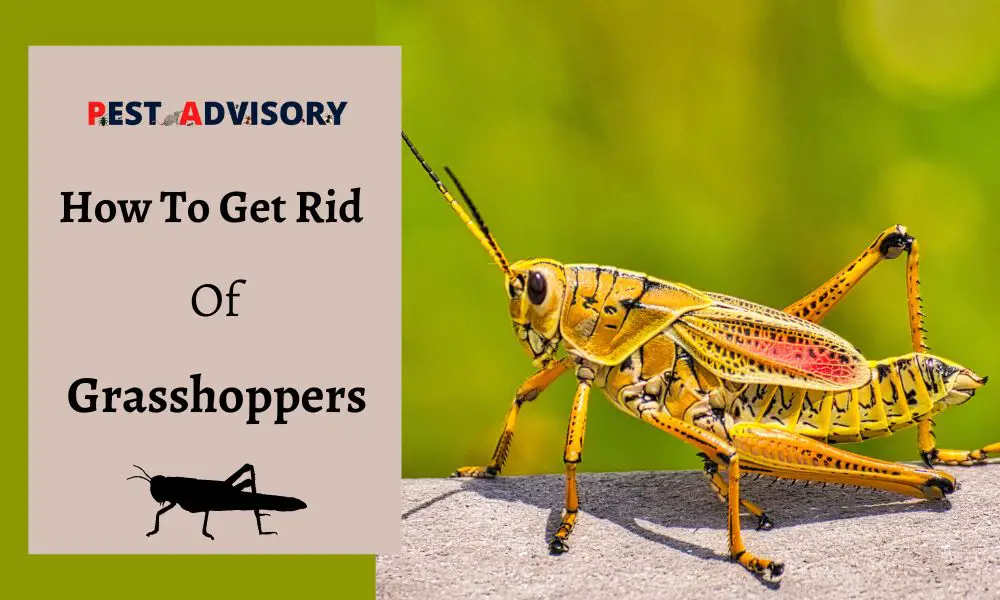Grasshoppers can be a nuisance in gardens and crops, munching on leaves and causing damage to plants. Their rapid reproduction and voracious appetite can quickly lead to infestations that threaten the health of your plants.
If you’re struggling with a grasshopper problem and looking for effective ways to get rid of them, you’ve come to the right place.
In this article, we will provide you with practical tips and techniques to control grasshopper populations and protect your garden.
Important Note: If you're tired of pests and want a reliable solution, then you should definitely consider seeking help from a professional pest control company. DIY solutions can be effective, but if you're dealing with a significant pest infestation, you don't want to rely solely on DIY methods. Pest control companies typically don't charge huge fees. You can fill out this form to receive free quotes from the top local pest control companies, and compare the quotes and see for yourself. Then, finally, your pest problems will be eliminated for good.
Why there are Grasshoppers in My Garden?
Grasshoppers are known for their remarkable jumping ability and insatiable appetite for plants. If you’ve noticed grasshoppers in your garden, lawn, or even around your house, you may be wondering why they are attracted to these areas.
Several factors can draw grasshoppers to these locations. Lush greenery, favorable weather conditions, and the availability of food sources are some of the reasons why grasshoppers may flock to gardens, lawns, and houses.
Additionally, grasshoppers are highly mobile insects that can migrate in search of food and suitable habitats, which could explain their presence in your area.
Signs of Grasshopper Infestation
Grasshoppers are known for their ability to devour plant foliage and pose a threat to gardens, lawns, and crops.
If you suspect a grasshopper infestation in your outdoor spaces, it’s crucial to be able to identify the signs of their presence and understand the damage they can inflict.
Grasshoppers can cause significant damage to plants, leaving behind telltale signs of their feeding activity. Chewed leaves, missing plant parts, and tattered foliage are some of the visible signs of grasshopper damage.
In some cases, grasshoppers can even consume entire plants, leaving nothing but bare stems behind.
How to Get Rid of Grasshoppers
Weeding
Keeping your garden or lawn free from weeds can significantly reduce the hiding spots and food sources for grasshoppers.
Regularly remove weeds from your outdoor spaces, especially those that are in close proximity to your plants, to minimize the habitat for grasshoppers.
Tilling
Tilling or cultivating the soil can disrupt the grasshopper’s life cycle by exposing their eggs to the elements or predators.
Use a tiller or a rake to turn over the soil in your garden or lawn, especially in the fall and spring, to help control grasshopper populations.
Home Remedies
Vinegar Spray
Mix equal parts of water and white vinegar in a spray bottle and apply it directly on grasshoppers or their feeding areas.
The strong smell and taste of vinegar can deter grasshoppers and discourage them from feeding on your plants.
Flour
Sprinkling flour on the leaves of plants can interfere with grasshoppers’ feeding by clogging their digestive system when they consume it.
Simply dust flour onto the foliage of affected plants, paying attention to the undersides of leaves where grasshoppers tend to hide.
Garlic Spray
Blend a few garlic cloves with water and strain the mixture into a spray bottle. Spray the garlic-infused water onto your plants to repel grasshoppers.
The strong odor of garlic can be an effective deterrent for grasshoppers and other pests.
Chemical Remedies
Insecticidal Soap
Use insecticidal soap, which is a safe and effective option for controlling grasshoppers. Follow the manufacturer’s instructions and spray the soap directly on the grasshoppers or their feeding areas.
The soap suffocates the grasshoppers by clogging their spiracles, which are their breathing pores.
Chemical Insecticides
Consult with a professional or your local agricultural extension office for approved chemical insecticides that are effective against grasshoppers.
Follow the instructions carefully, as these products may contain harmful chemicals and require proper handling and application.
Biological Remedies
Natural Predators
Introduce natural predators of grasshoppers into your garden or lawn, such as birds, spiders, frogs, or praying mantises.
These predators can help keep grasshopper populations in check by feeding on them and reducing their numbers.
Nematodes
Beneficial nematodes, microscopic worms that are safe for plants and animals, can be used to control grasshoppers.
These nematodes parasitize and kill grasshopper eggs in the soil, reducing their population for the following season.

Prevention Measures
Plant Selection
Opt for grasses, flowers, and vegetables that are less attractive to grasshoppers.
Such as Switchgrass, Little bluestem, Big bluestem, Indian grass, Blue grama, Buffalograss, Sagebrush, Yarrow, Lavender, Rosemary, Thyme, Oregano, Black-eyed Susan, Coneflower, and Milkweed.
Crop Rotation
Practice crop rotation in your vegetable garden. Avoid planting the same type of crop in the same location year after year, as this can attract grasshoppers and other pests. Crop rotation can disrupt the life cycle of grasshoppers and reduce their populations.
Clean Garden/Lawn
Maintain a clean and tidy garden or lawn by removing debris, fallen leaves, and decaying plant matter.
This can help eliminate potential hiding spots for grasshoppers and reduce their habitat.
Physical Barriers
Use physical barriers such as row covers, netting, or screens to protect vulnerable plants from grasshopper feeding.
These barriers can physically prevent grasshoppers from reaching your plants and causing damage.
Deterrents and Repellents
Visual Deterrents
Place shiny objects such as aluminum foil, reflective tape, or CDs around your garden or lawn to deter grasshoppers.
The reflected light and movement can confuse and deter grasshoppers from approaching your plants.
Odor Repellents
Apply commercial or homemade repellents with strong odors that can deter grasshoppers. Examples include garlic spray, hot pepper spray, or essential oils such as neem oil or citronella oil.
Spray these repellents on your plants or their surroundings to discourage grasshoppers from feeding.
Companion Planting
Plant aromatic herbs or flowers, such as marigolds, basil, or lavender, among your vulnerable plants.
The strong scents of these companion plants can act as natural repellents and deter grasshoppers from approaching.
Sound Deterrents
Use sound-based deterrents, such as wind chimes or ultrasonic devices, to deter grasshoppers.
The noise created by these devices can disrupt the grasshoppers’ feeding behavior and discourage them from staying in your garden or lawn.
Chemical Repellents
Consult with a professional or your local agricultural extension office for approved chemical repellents specifically designed for grasshoppers.
Follow the instructions carefully, as these products may contain harmful chemicals and require proper handling and application.
Frequently Asked Questions
Are Grasshoppers Dangerous and Do They Bite?
Grasshoppers are generally not dangerous to humans as they do not bite or pose a threat to humans.
They are herbivorous insects that primarily feed on plants and do not have the ability to bite or sting.
How to Kill Grasshoppers?
To kill grasshoppers, use insecticides specifically formulated for grasshoppers, such as carbaryl or permethrin. Apply according to the label instructions.
Alternatively, use natural remedies like diatomaceous earth or neem oil. Manual methods like handpicking or setting up traps can also be effective.
How to Get Rid of Lubber Grasshoppers?
To get rid of lubber grasshoppers, try using insecticidal sprays or dust specifically formulated for grasshoppers, physically removing them by hand, and keeping your lawn or garden tidy and free of tall grass or weeds that may attract them.

How to Get Rid of Giant Grasshoppers?
Use insecticides labeled for grasshoppers, trim tall grass and weeds, remove debris that can provide hiding places, introduce natural predators like birds or frogs, and create barriers with netting or screens to prevent their entry.
How to Stop Grasshoppers from Eating Plants?
Use natural or chemical repellents, like neem oil or insecticidal soap. Plant companion plants that repel grasshoppers, such as marigolds or cilantro.
Install physical barriers like mesh nets or row covers. Keep your garden clean and remove debris that can serve as hiding spots.
Conclusion
With the use of natural remedies like weeding and tiling, vinegar, flour, garlic spray, and other homemade solutions, and the implementation of prevention measures and deterrents, you can effectively combat grasshopper infestations in your garden, lawn, or house.
Early detection, prompt action, and consistent preventive measures are crucial in managing grasshopper populations and protecting your plants.
With a proactive approach, you can enjoy a healthy, vibrant garden or lawn free from the damage caused by these pests. Happy gardening!

